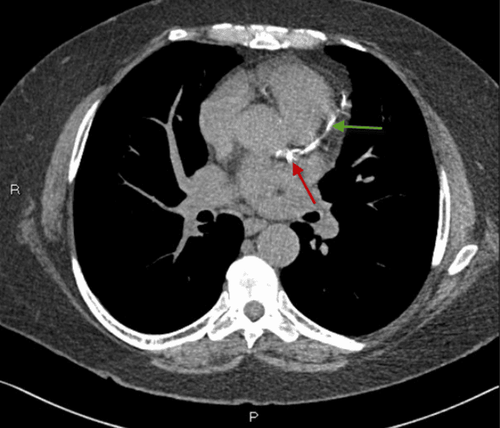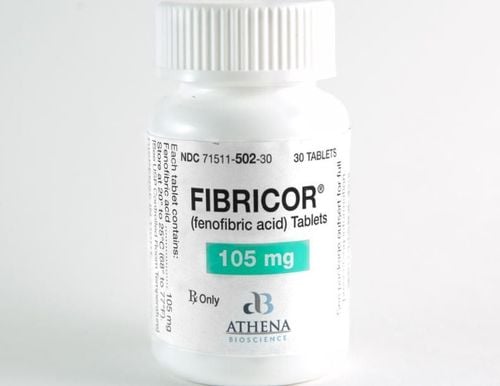This is an automatically translated article.
The article is professionally consulted by Master, Doctor Lam Thi Kim Chi - Department of Diagnostic Imaging - Vinmec Danang International General Hospital.
Coronary artery calcification is a cardiovascular disease that affects human health and life. Therefore, the method of computed tomography coronary artery calcification was born to help doctors diagnose and provide the best treatment for patients.
1. What is coronary calcification?
Coronary artery calcification is the deposition of coronary calcium. This is part of the development of atherosclerotic lesions. This phenomenon occurs only in atherosclerotic arteries and does not occur in normal artery walls.
Calcium occurs in small amounts in early atherosclerotic lesions (forming during the first 20 to 30 years of age) and is found more and more frequently with increasing age. The frequency of the disease increases after the age of 50 in men and 60 years in women.
In addition, coronary calcification can also be understood as atherosclerosis or hardening of the artery wall. It is mainly caused by the deposition of cholesterol and the aging process. Atherosclerosis reduces the elasticity of blood vessels with time and age.

Tình trạng xơ vữa động mạch vành
2. Risk factors for coronary artery disease
The risk factors for coronary artery disease are modifiable or non-modifiable.
Factors that cannot be changed such as age or sex,...
As you age, your risk of coronary artery disease increases. After menopause, women have a higher risk of coronary artery disease. great number of. Family history of blood-sufferers with cardiovascular events with age <55 years in men and <65 years in women. Then you have a higher risk of coronary artery disease. The risk factors are modifiable such as diet or lifestyle.
Increased cholesterol (blood fat): In adults, if cholesterol levels increase by more than 10% of the normal value, the risk of cardiovascular complications increases by 30%. Smoking: Increases your risk of cardiovascular disease and doubles your risk of coronary artery disease. However, once smoking is stopped, the risk of the disease will also decrease gradually. High blood pressure, obesity, diabetes Drinking too much beer and alcohol also increases the risk of coronary heart disease.

Hút thuốc lá làm tăng nguy cơ mắc bệnh tim mạch
3. Computed tomography method of coronary artery calcification
3.1. What is coronary artery calcification point CT? Long ago, chest X-ray showed coronary artery calcification. However, this method cannot quantify the degree of calcification. Today, with the great development of computed tomography, it is possible to quantify coronary calcifications with a relatively short scan time, minimizing irradiation for patients.
Computed tomography coronary artery calcification is an imaging method that uses a computed tomography machine and does not use iodinated contrast as an X-ray method.
This method determines the degree of calcification of the coronary arteries but does not assess the degree of narrowing and the nature of the atherosclerotic plaque.
Along with the risk factors for coronary artery disease as listed above, the screening and assessment of coronary artery calcification score helps to identify the risk factors of patients having future cardiovascular events. The level of assessment of high or low risk of disease is usually based on two algorithms, Framingham and PROCAM.
3.2. Indications and contraindications to the method Indication
Used to screen and assess future coronary heart disease risk factors when patients have risk factors for cardiovascular disease.
Contraindications
For this method there are no absolute contraindications, only relative contraindications when pregnant women.
3.3.What should the patient prepare before taking the CT scan?
Your doctor may ask you to avoid drinking coffee and smoking for 4 hours before the scan. Before the scan, ask the patient to remove earrings, necklaces, hairpins, or any other metal tools on the body. In case the patient is overstimulated, a light sedation should be used to facilitate the imaging process.

Kết quả chụp điểm vôi hóa động mạch vành tim
3.4. Steps to perform coronary calcification point computed tomography Place the patient on the scanning table in the supine position. Then install the electrocardiogram (ECG) port. Check the patient's heart rate on the monitor at the scanner. Coronary angiography evaluates the calcification point: the field is taken from the tracheobronchial fork to the end of the apex of the heart. 3mm slice thickness, thinner image reconstruction with overlay for better assessment of calcification. Process assessment of calcification at work area or scanner. Depending on the type of camera when shooting, the calculation of the calcification score will be based on different calculation algorithms. But in general, there are three commonly used calcification scales, the Agatston scale. The Agatston scale is based on the amount of calcium found in the patient's coronary arteries, including a score for each major artery and a total score. Negative result if no coronary calcification is seen: risk of heart attack within the next 2-5 years is low Positive result: coronary artery calcification is found. This is a sign of atherosclerosis and coronary artery disease. The higher the Agatston score, the more severe the atherosclerosis. 3.5. Risks of computed tomography coronary artery calcification This is a non-invasive technique, without the use of intravenous contrast, so there is little risk of harm to the patient. The dose of radiation used during the scan is usually not large. The total radiation dose the patient receives is approximately equal to the radiation dose due to natural exposure over 1 year.
3.6. Notes Coronary artery point computed tomography scan does not cause complications. There are only flaws in the technical implementation.
During the scanning process, the patient does not lie still, affecting the results of the scan. The results do not clearly reveal the image, then it needs to be done again.

Kiểm tra sức khỏe định kỳ để phát hiện và điều trị sớm bệnh lý
Vinmec International General Hospital is currently applying Coronary computed tomography angiography without beta block medication for patients wishing to diagnose coronary artery disease. To register for examination and treatment at Vinmec, please go directly to Vinmec health system or register online HERE.
MORE:
CT scan to assess the degree of coronary calcification Accurate diagnostic techniques for coronary artery disease Computerized tomography - the gold standard in diagnosing coronary heart disease














